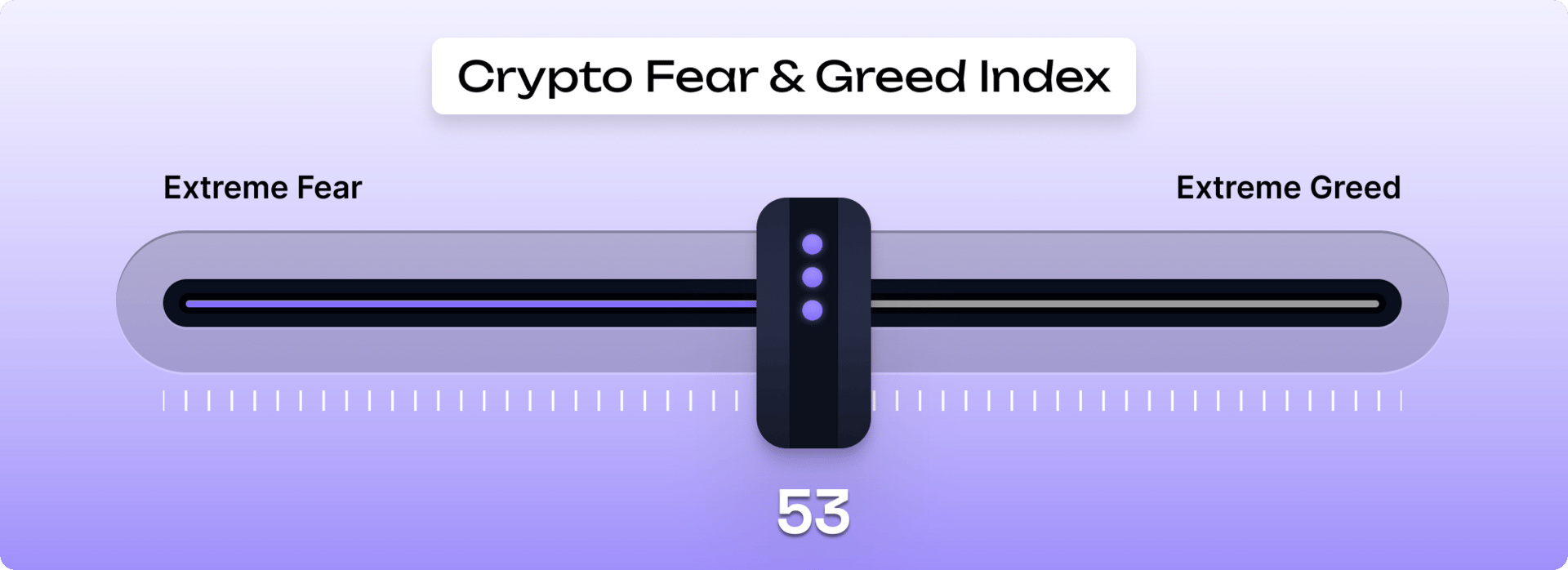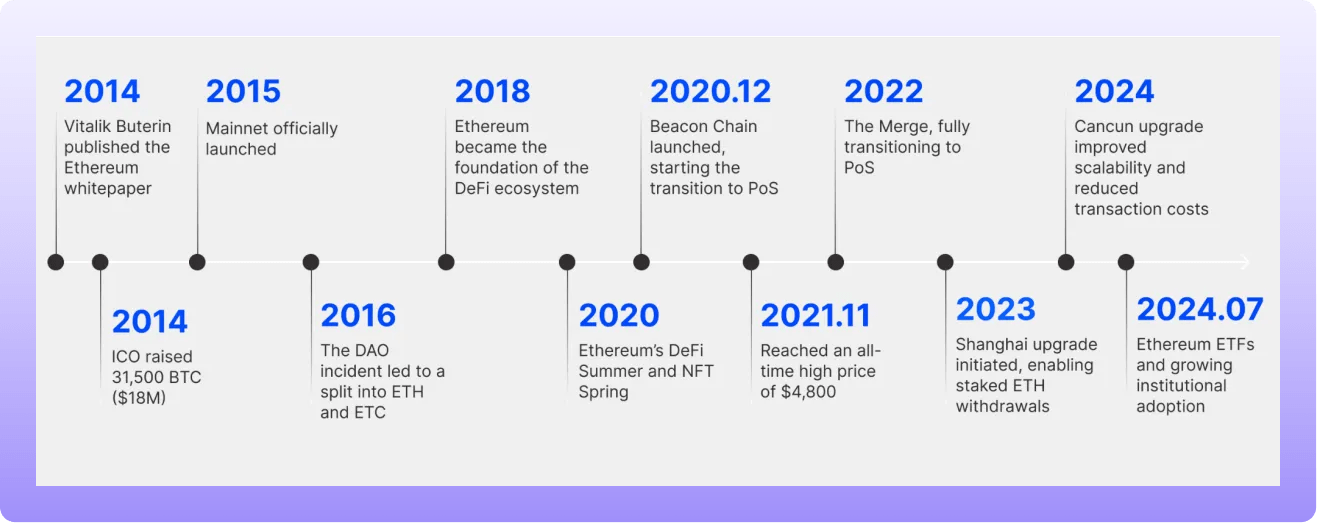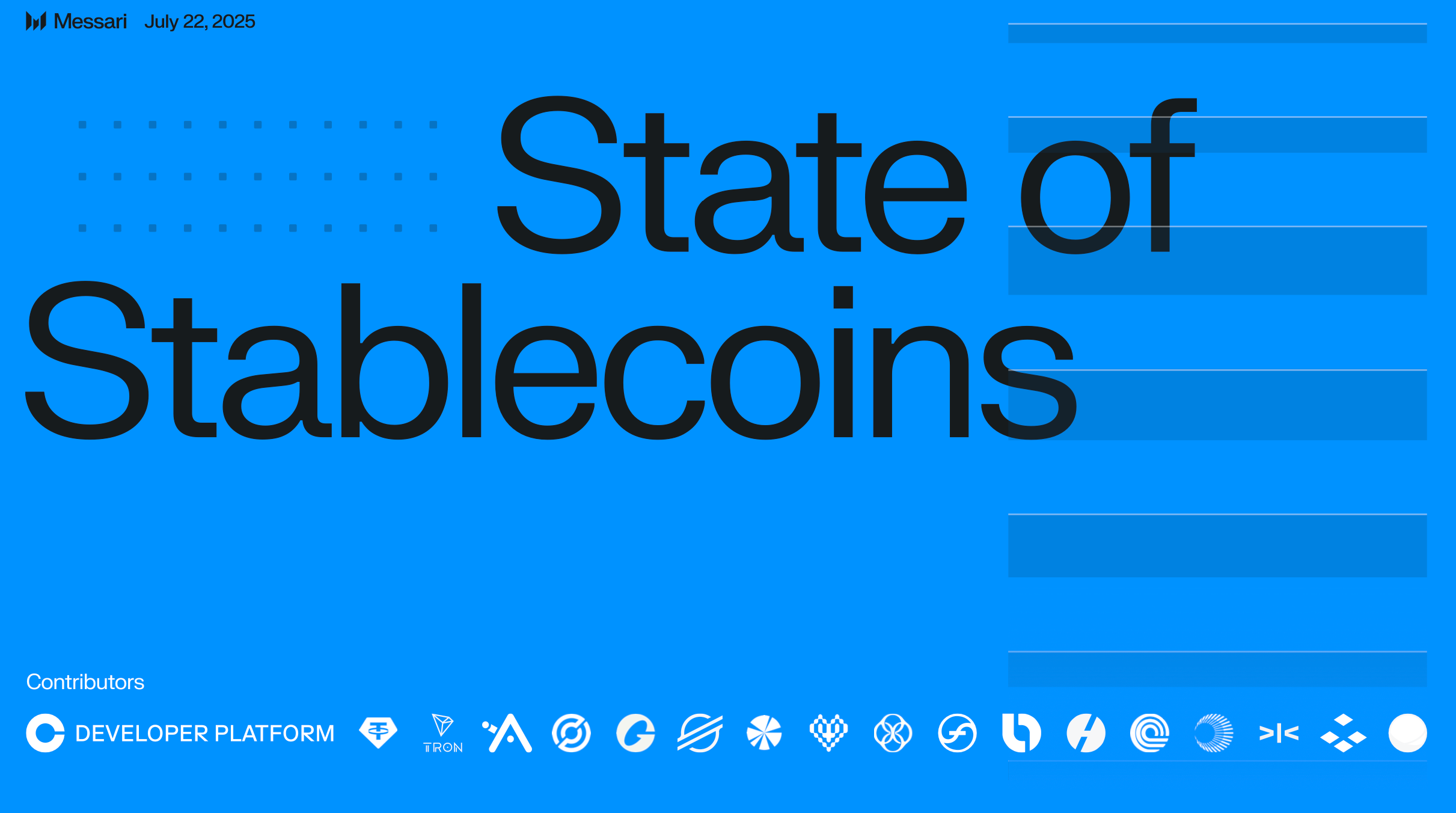- Web3 Investor Briefing by w3.group
- Posts
- Web3 Investor Briefing | August 2025
Web3 Investor Briefing | August 2025
Every month we provide you with insightful deep-dives into the world of Web3 investing.
Welcome to this month's investor briefing featuring our latest analysis, findings and strategic insights from the Web3 ecosystem.
TL;DR
Julius from w3.wave discusses the positive market position of Ethereum, its catalysts, and positive factors for the altcoin markets.
Henrik from w3.ventures analyzes whether Web3 will end up as a conglomerate controlled by one or more centralized platforms that use crypto only in the back end, and what that would mean for a venture fund.
Tom from w3.labs reflects on Ethereum’s history and what makes it ideal for tokenization, as well as its macro tailwinds.


Ethereum: From languishing to leading
For much of the past two years, Ethereum has lived in Bitcoin’s shadow, despite strong fundamentals, a flourishing DeFi ecosystem, and Layer-2 maturation. Narrative momentum waned, and many deemed it “dead.”
But tides turn quickly when the story gets re-told and gains institutional support.
The Catalyst? Tom Lee.
In July, Fundstrat’s Tom Lee joined the advisory board of Bitmine ($BMNR), a newly formed ETH-focused treasury firm. On CNBC, he reframed the pitch for ETH the asset:
Stablecoins are crypto’s “ChatGPT moment.”
Stablecoins settle on Ethereum.
Conclusion: Bullish ETH.
That clear, institutional-friendly narrative hit its mark. Over the past couple of months ETH has rallied strongly, reclaimed key levels versus BTC (see chart of the week below). This momentum isn't just retail-driven. On-chain data and 13F filings confirm sustained institutional accumulation via ETFs and digital asset treasury (DAT) models. DAT structures allow mainstream investors exposure to ETH without token custody, potentially a massive unlock for future capital inflows.
Treasury companies like Bitmine and Sbet, have been in an aggresiv accumulation mode, and are currently holding roughly 1.5% of the ETH supply. However, this trend might just be starting with both companies aiming for a share of the network of roughly 5% and Bitmine just recently filed for a staggering $20bn offering with the SEC.

To put this into context - Ether has roughly one fourth of the market cap of Bitcoin, so $20bn of buying power would translate into $80bn of buying pressure for Bitcoin relative to market cap. That is more than the net asset value of all of Microstratgy’s (now Strategy) Bitcoin holdings!
What’s next?
The impact is already rippling through the ecosystem. DeFi protocols tied to ETH are coming back to life, and risk appetite beyond BTC is returning. Historically, ETH/BTC bottoming has often predated broader alt market rallies. If history reruns, the bullish thesis we've outlined may now be unfolding.
Ethereum may have started this cycle overlooked, but it's rapidly become TradFi’s most compelling crypto narrative.
Digital Asset Holding Companies for Altcoins – An Emerging Frontier
While digital asset treasury (DAT) companies holding Bitcoin and Ethereum have captured most of the spotlight this year, we are beginning to see the first serious experiments with applying the same model to other segments of the crypto market.
The concept is straightforward: a publicly listed company allocates a significant portion (or all) of its balance sheet to a specific crypto asset, giving equity investors indirect exposure without requiring them to custody tokens themselves. This structure not only provides traditional market participants with a regulatory-friendly investment vehicle, it also has the potential to unlock meaningful new demand for otherwise illiquid or niche assets.
We are now seeing early versions of this model for altcoins - ranging from infrastructure tokens in the DePIN space to DeFi blue chips and even specialized AI-crypto hybrids. While the scale remains small compared to BTC and ETH-focused treasuries, the implications are significant:
Liquidity & Price Impact: Even modest treasury allocations can create substantial buy pressure in smaller-cap altcoins due to thinner order books. The one Ethena treasury company, for example, is buying a larger share of the circulating supply than all other DATs.
Narrative Tailwinds: Public market listings provide a constant marketing loop, bringing awareness to the underlying asset far beyond the crypto-native audience. Again, looking at Ethena, it provides a way for investors to gain exposure to the stablecoin narrative.
Solving investor unlocks: This structure opens the door to new inflows, which can be used to mitigate supply overhang from early-investors which tend to sell their tokens on the market.
That said, the risks for altcoin-focused DATs are materially higher. Concentration in lower-liquidity assets increases volatility, and the long-term sustainability of these treasuries will depend on both the strength of the underlying project and prudent treasury management.

Source: Blockworks Research


“The Everything Exchange”: Is this the conglomeration of Web3?
Google Search was initially a simple tool for finding what you were looking for in the new frontier of the World Wide Web. Google quickly evolved into a one-stop shop offering many applications, including email, calendars, storage, shopping, and more. Due to network effects, customers stayed loyal, as it was the easiest and most convenient option.
Similarly, Coinbase emerged as a straightforward platform for purchasing cryptocurrencies like Bitcoin, serving as a centralized gateway to Web3. Coinbase is now expanding rapidly into new applications such as tokenized stocks, prediction markets, social media, and DeFi. Due to network effects, users stick to Coinbase because it is the easiest and most convenient way to access the Web3 world.
This comparison is not far-fetched, but what current developments are leading to this evolution? Who are the players, and what are the chances that it will play out in the same way?
Recent developments showing the way

Recently, Robinhood, Gemini, and Kraken also launched initiatives for tokenized stocks on crypto rails. Robinhood plans to first issue them on Arbitrum and later on its own Arbitrum-based chain. Gemini chose Dinari and Arbitrum, while Kraken chose Solana. Although the type of blockchain used is meaningful to Web3 natives like us, what actually matters is that these stocks enable 24/7 trading for everyone worldwide and signal a convergence between the traditional and crypto worlds. Coinbase recently announced the launch of tokenized stocks and prediction markets on its platform as part of its "Everything Exchange" initiative.
Coinbase is becoming the everything exchange.
All assets will inevitably move onchain, so we want to have everything you want to trade in one place.
Incoming: DEX integration (access millions of assets) + expansion of our derivatives offerings.
Next: tokenized equities + more.
— Brian Armstrong (@brian_armstrong)
8:29 PM • Jul 31, 2025
While not a new development, most exchanges now offer staking on their platforms. Robinhood announced this feature at their EthCC keynote in Cannes. These exchanges are not the most competitive validators, as they charge higher commissions than other providers. However, they are banking on their users' desire for simplicity and for staying on one integrated platform. This strategy seems to be successful, as 25% of all ETH staked is through centralized exchanges.
Similarly, crypto-backed loans have been available for a long time in DeFi (think of MakerDAO and their ETH-backed loans), but they are enjoying a renaissance now that they are available on Coinbase. As a Coinbase user, you can wrap your Bitcoin into cBTC, the Coinbase version, and borrow USDC against it. This smooth process involves no withdrawals, bridging, etc., as it is available on Coinbase, making it accessible to Coinbase customers who hold Bitcoin. Behind the scenes, Coinbase uses the DeFi protocol Morpho, effectively validating the "DeFi-mullet" thesis: Centralized on the front end and decentralized on the back end.

Furthermore, Coinbase built an all-in-one crypto app called the Base app, which is currently in invite-only mode. It combines a wallet, a trading platform, and social media, among other features.
Hello from @baseapp
Coinbase Wallet is now much more than a wallet. Your new home to create, earn, trade, discover apps, and chat with friends all in one place.
— Base app (@baseapp)
10:20 PM • Jul 16, 2025
Key features include:
Social feed: A new kind of social experience where users fully own their content and get paid for engagement.
Trading and payments: Buy, sell, send, and explore millions of tokens 24/7, all while maintaining full control of assets through a self-custody smart wallet.
Mini apps: Onchain apps that run seamlessly inside the social feed and messages.
Base account: A smart wallet and universal onchain identity that enables one-click login and consistent use across apps and chains.
Base pay: An express checkout for stablecoin payments, now live on Shopify.
As you might have guessed, Kraken also has its own wallet app and a payment solution called Krak. Maybe not the smoothes name choice, but it compares well to other payment solutions like PayPal, Venmo, and Revolut, as you can see in the following table.
Robinhood's suite of financial services includes a wallet app and banking solution, as well as payments functionality, though currently, these are available exclusively to users of the Robinhood platform.
Additionally, Robinhood is focusing heavily on AI wealth management features under its Robinhood Gold, Strategies, and Cortex programs. The company is on a path to become the go-to financial application for investors of all kinds.
These developments show that centralized exchanges are becoming enhanced front-ends for crypto and DeFi, offering integrated experiences enriched with social and AI features. The questions are whether we will see a multi-polar world or a winner-take-all market, and what market share DeFi platforms and front-ends will have in the future.
The players in the market
Micky Malka, founder of Ribbit Capital, which invested in both Coinbase and Robinhood, recently said in a podcast that “if you had told me back then that all these companies were going to be competing for this uh we would have never guessed it ever”. While they are currently competing for the same user base, Micky thinks that all of the Robinhoods and Coinbases have a great future:
Malka also says that a select group of companies has spent the past decade laying the groundwork by building brands, securing licenses, earning customer trust, and strengthening their teams, to now gain market share from incumbents. Over the next decade, he expects them to strongly compete with traditional fintechs by launching innovative products, leveraging AI and crypto, and using their regulatory and market advantages to accelerate growth.
This essentially means that, although they are all competing for the same pie, the pie is redistributing so quickly that all companies in a favorable position are benefiting from this market shift and a multipolar digital world.
What does this mean for the venture markets?
While we support the increased adoption of crypto and DeFi products through user-friendly platforms, we must also examine projects seeking funding that could compete with the substantial network effects of established companies. In other words, we will often have to ask ourselves and the founders if, for example, this innovative finance tool will be widely adopted or if it will be remembered as a great idea that is now an additional feature on one or more of the aforementioned platforms.

10 years Ethereum: A decade of uptime, a decade of upside
Ethereum just crossed a rare milestone and a testament to it’s reliability: a full decade of live operation. In that time it’s matured from an experiment into neutral, programmable settlement that institutions can plan around. The simplest mental model still holds: ETH is the “digital oil” that powers computation, data availability, and security for an expanding on-chain economy.
Why this matters: reliability and credible neutrality are the foundation for mainstream finance, consumer platforms, and public-market products to build on-chain. When the base layer is stable and impartial, risk teams can underwrite multi‑year strategies, not one‑off pilots.
Institutional momentum
Both the supply and demand sides of institutions are coming to Ethereum. They are offering tokenized assets, and treasury companies are buying ETH for their balance sheets.
Funds, cash equivalents, and real-world assets are issued and administered on public chains. These assets require a credible, neutral infrastructure with deep liquidity, standards, and tooling. This makes Ethereum the obvious choice. Ethereum offers the broadest developer ecosystem, institutional custody and support, and composability with stablecoins, DeFi, and identity rails. These features reduce time-to-market and operating risk for tokenized products. The advantages of tokenization lie in faster settlement, transparency, and fractional access. Interoperability and standards are the next unlock, and these are areas in which Ethereum’s network effects and open standards lead.
Treasury stocks: New institutional demand driver
As mentioned in the w3.wave section above, public companies are increasingly disclosing their direct ETH holdings on their balance sheets. Some companies have even made it their sole purpose to be an ETH treasury company, adding a new cohort of structural buyers alongside funds, DAOs, and on-chain treasuries. This trend can now be tracked in real time, which makes treasury demand for ETH more transparent to traditional investors and analysts.

Why this matters for ETH
Balance‑sheet ETH turns cyclical trading flows into longer‑duration demand.
Greater disclosure normalizes ETH as a treasury and funding asset for listed firms, broadening the pool of compliant buyers.
For investors, owning ETH directly remains the cleanest way to align with this demand, without adding an extra corporate wrapper.
Macro tailwinds for Ethereum
After years of facing headwinds and criticism for its comparatively slower pace of innovation, Ethereum is currently turning this perceived weakness into a strength.
Institutions increasingly prefer public, neutral infrastructure they don’t have to control in order to trust. Ethereum’s role as credibly neutral settlement layer, with ETH as the metered resource for security and compute, is a feature, not a bug.
Policy and market infrastructure
A gradual shift toward clearer rules and the development of mainstream market infrastructure, including ETFs, tokenization rails, and yield-bearing cash products, has created a more favorable environment for deployment.
Recent developments include the collaboration between BNY Mellon and Goldman Sachs to record ownership of select money market funds on a blockchain, which illustrates the transition of tokenized fund administration from the pilot stage to production. Meanwhile, the GENIUS Act, which establishes clear regulations for stablecoins in the U.S., was approved by both the Senate and the House of Representatives with significant bipartisan support. Following this, the already growing stablecoin supply on Ethereum and its layer 2s saw a further increase and sits at a staggering $156B at the time of writing.

Additionally, the SEC’s Division of Corporation Finance issued a staff statement on Aug 5, 2025, indicating that certain “liquid staking activities” and their receipt tokens, when structured as described, do not involve the offer or sale of securities, which is further reducing the legal uncertainty for staking programs across the industry.
ETH as an investable primitive for the next decade
We believe that ETH is set up for a decade of growth and adoption with a simple mental model and clear return drivers:
ETH fuels computation, data availability, and security across the Ethereum stack. Demand is set by activity: institutional tokenization, consumer apps that merge attention and value, and stablecoin yield adoption.
Also, tokenization and stablecoin adoption are meaningful drivers of Ethereum's growth, and there are many transparent ways to track them:
On-chain activity growth and fees
Staking yield plus burn dynamics
Real‑economy integrations (tokenized funds, treasuries, payments rails)
w3.labs POV: How we help
Staking as core exposure
We offer institutional-grade ETH staking, which allows you to participate in and profit from the growth of the Ethereum ecosystem. Why buy shares in a company that holds ETH when you can stake directly on our platform and eliminate the need for middlemen?
Advisory
We provide practical advice on all things Ethereum and digital assets. We can assist with services such as RPC nodes, custom/white-label staking, staking for your protocol, and custody. Contact us now to find the right strategy for you.














